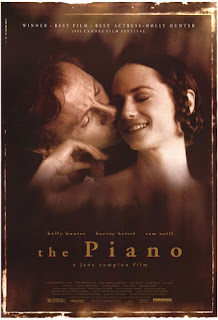April 1st: MONSIEUR VERDOUX (Charles Chaplin, 1947)
After losing his job, a bank teller resorts to marrying rich women and murdering them for their money.
Director Orson Welles planned a film combining the Bluebeard folktale with the exploits of real-life criminal Henri Landru, convicted of killing 11 widows in the 1920s. He asked Charles Chaplin to star, but the comedian had not acted for another director in decades, and instead purchased the rights to make the film on his own.
Chaplin had not made a film since his 1940 hit The Great Dictator, his first talking picture. Going further away from what made him famous, he also left behind his "Little Tramp" character and its trademark bowler hat and moustache.
While The Great Dictator dealt in political satire by poking fun at Hitler, Monsieur Verdoux goes into considerably dark comedic territory, with its droll treatment of a serial killer story. In addition, the main character's condemnation of capitalism and societal hypocrisy were bold statements post-WWII.
The film was shot in California, including locations at Big Bear and Lake Arrowhead. As usual, Chaplin not only wrote, directed, produced, and starred, but also contributed the musical score. After completion, he was forced by the censors to make alterations for sexuality, religious blasphemy, and general moral deficiency.
Due to recent scandals, including his affairs with younger women and a smear campaign conducted by J. Edgar Hoover's FBI accusing him of being a communist, Chaplin was not in the public's good graces at the time of Verdoux's release. The film was received harshly by American critics and journalists, with few vocal champions.
Despite the controversy, Chaplin's script was nominated for an Academy Award. He would make one more film in Hollywood before leaving the country after being threatened with deportation. He finally returned to the U.S. in 1972 to receive an honorary Oscar.
Running time is approx. 2 hrs.
Chaplin had not made a film since his 1940 hit The Great Dictator, his first talking picture. Going further away from what made him famous, he also left behind his "Little Tramp" character and its trademark bowler hat and moustache.
The film was shot in California, including locations at Big Bear and Lake Arrowhead. As usual, Chaplin not only wrote, directed, produced, and starred, but also contributed the musical score. After completion, he was forced by the censors to make alterations for sexuality, religious blasphemy, and general moral deficiency.
Due to recent scandals, including his affairs with younger women and a smear campaign conducted by J. Edgar Hoover's FBI accusing him of being a communist, Chaplin was not in the public's good graces at the time of Verdoux's release. The film was received harshly by American critics and journalists, with few vocal champions.
Despite the controversy, Chaplin's script was nominated for an Academy Award. He would make one more film in Hollywood before leaving the country after being threatened with deportation. He finally returned to the U.S. in 1972 to receive an honorary Oscar.
Running time is approx. 2 hrs.










Comments
Post a Comment